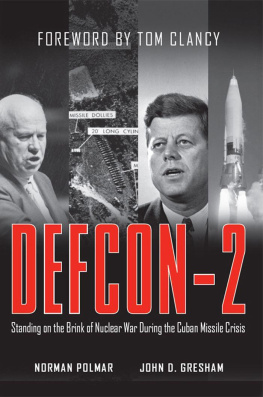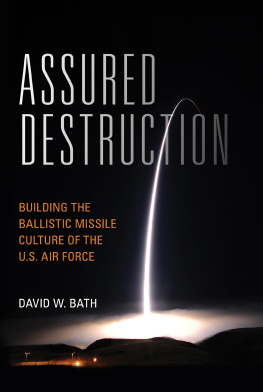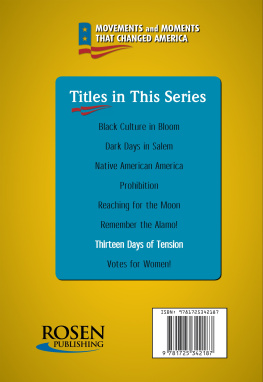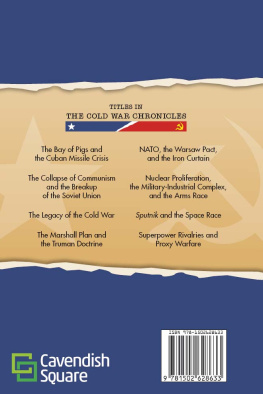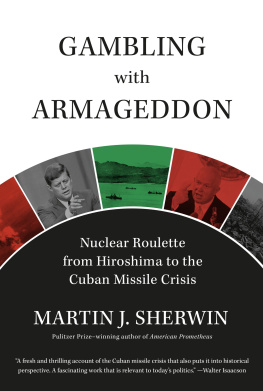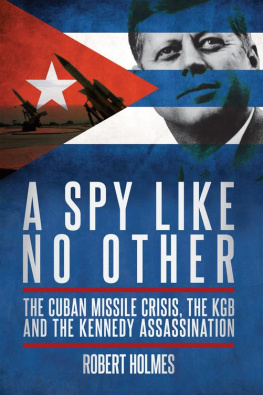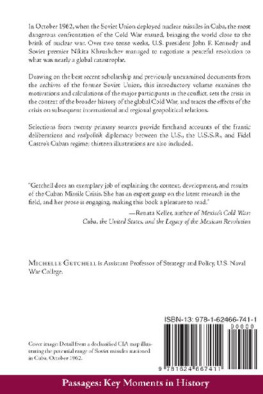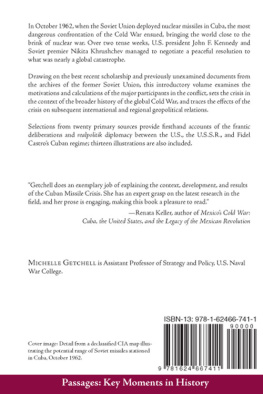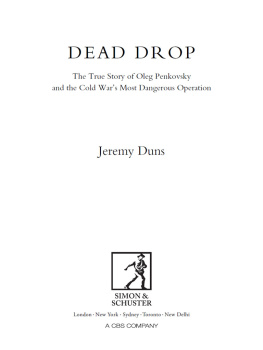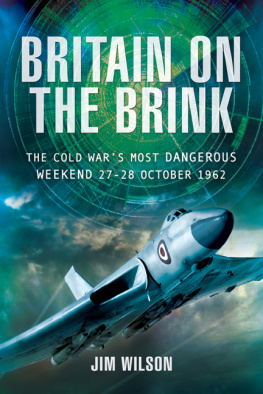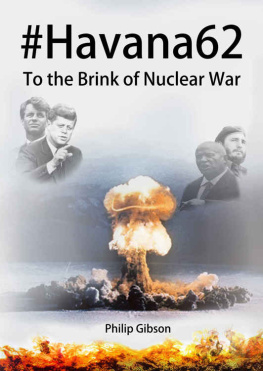DEFCON-2
Selected books on the Cold War by Norman Polmar
Aircraft Carriers: A History of Carrier Aviation and Its Influence on World Events
Atomic Submarines
Chronology of the Cold War at Sea, 19451991, with Eric Wertheim, Andrew Bahjat, and Bruce Watson
Cold War Submarines: U.S. and Soviet Submarine Design and Construction with Kenneth J. Moore
Guide to the Soviet Navy
Merchants of Treason with Thomas B. Allen
The Ships and Aircraft of the U.S. Fleet
Soviet Naval Power
Spy Book: The Random House Encyclopedia of Espionage with Thomas B. Allen
Spyplane: U-2 History Declassified
Strategic Air Command with Tim Laur
Strategic Weapons: An Introduction
Selected books on the military by John D. Gresham
Submarine with Tom Clancy
Fighter Wing with Tom Clancy
Special Forces with Tom Clancy
Seapower with Ian Westwell
DEFCON-2
Standing on the Brink of Nuclear War
during the Cuban Missile Crisis
Norman Polmar
John D. Gresham
Foreword by Tom Clancy

John Wiley & Sons, Inc.
Copyright 2006 by Norman Polmar and John D. Gresham. All rights reserved
Published by John Wiley & Sons, Inc., Hoboken, New Jersey
Published simultaneously in Canada
No part of this publication may be reproduced, stored in a retrieval system, or transmitted in any form or by any means, electronic, mechanical, photocopying, recording, scanning, or otherwise, except as permitted under Section 107 or 108 of the 1976 United States Copyright Act, without either the prior written permission of the Publisher, or authorization through payment of the appropriate per-copy fee to the Copyright Clearance Center, 222 Rosewood Drive, Danvers, MA 01923, (978) 7508400, fax (978) 6468600, or on the web at www.copyright.com. Requests to the Publisher for permission should be addressed to the Permissions Department, John Wiley & Sons, Inc., 111 River Street, Hoboken, NJ 07030, (201) 7486011, fax (201) 7486008, or online at http://www.wiley.com/go/permissions.
Limit of Liability/Disclaimer of Warranty: While the publisher and the author have used their best efforts in preparing this book, they make no representations or warranties with respect to the accuracy or completeness of the contents of this book and specifically disclaim any implied warranties of merchantability or fitness for a particular purpose. No warranty may be created or extended by sales representatives or written sales materials. The advice and strategies contained herein may not be suitable for your situation. You should consult with a professional where appropriate. Neither the publisher nor the author shall be liable for any loss of profit or any other commercial damages, including but not limited to special, incidental, consequential, or other damages.
For general information about our other products and services, please contact our Customer Care Department within the United States at (800) 7622974, outside the United States at (317) 5723993 or fax (317) 5724002.
Library of Congress Cataloging-in-Publication Data:
Polmar, Norman.
Defcon-2 : Standing on the brink of nuclear war during the Cuban missile crisis / Norman Polmar, John D. Gresham; foreword by Tom Clancy.
p. cm.
Includes bibliographical references (p. 359) and index.
ISBN-13 978-0-471-67022-3 (paper)
1. Cuban Missile Crisis, 1962. I. Gresham, John. II. Title.
E841.P65 2006
973.922dc22
2005013196
10 9 8 7 6 5 4 3 2
Dedicated to
the Memory of Paul H. Nitze
(19072004)
In a career spanning nine presidencies, Paul Nitze has made enormous contributions to the freedom and security of his country. Paul Nitze exemplifies the powers of mind, commitment, and character needed to fulfill Americas world responsibilities. He was present at the creation of the strategy that has kept us at peace for forty years. His deep understanding of the issues of war and peace, his discharge of high public assignments, and his advice to those in authority have been invaluable to our national well-being. He remains the most rigorous, demanding, and independent of analysts and the wisest of counselors.
Medal of Freedom Citation
Awarded by President Ronald Reagan
November 7, 1985
CONTENTS
FOREWORD by Tom Clancy
Like most Americans who came of age in the second half of the twentieth century, my life and times were defined by the undeclared conflict known as the Cold War. Lasting some forty-five years, that confrontation held deadly consequences for mankind if it had ever gone hot. For most of those years, sanity and reason ruled the actions of both the United States and the Soviet Union. Direct confrontation was considered unthinkable due to the ever-growing nuclear arsenals of the two nations.
During that period, there were conflicts supported by the superpowersKorea, Vietnam, the Middle East, and Afghanistan, among others. But the United States and the Soviet Union were careful to avoid a direct confrontation.
The most dangerous exception came in 1962, with the Cuban Missile Crisis. I was in Loyola High School in Towson, Maryland, and I remember as if it were yesterday the uncertainty and terror of that time. The reason was obvious: the specter of nuclear war hung over the nation. We talked about it in school and after classes with friends. Our mothers bought extra food at the stores, and dads brought home extra flashlights, portable radios, and lots of batteries. And there was talk, if things really got bad, of the family taking a road trip to get farther away from Baltimore.
The Cuban Missile Crisis was the only time that the United States and the Soviet Union came close to using nuclear weapons against each other. While the actual balance of nuclear terror was unknown to most of the citizens of the two countries, the implications were clearboth countries could be destroyed, with millions of dead and many of the survivors mutilated.
We had good reason to be concerned. For most of the four decades since the crisis, the popular notion has been that the world was saved by sane, intelligent, and rational leaders, in direct communication, seeking an amicable solution. However, the massive declassification efforts of both sides since the end of the Cold War, the publication of several memoirs, and the candid recollections of many participantswho will now tell their storiesreveal that on several occasions in the fall of 1962 those leaders came very close to stumbling into nuclear Armageddon.
The origins of the Cuban crisis were in fact the final act of a march to confrontation that began in January 1961 with the inauguration of President John F. Kennedy. For Kennedy, the missile crisis was the unexpected result of an eighteen-month struggle to destroy the socialist regime of Fidel Castro, who had taken power from the despotic Fulgencio Batista in 1959. Castro soon became a major irritation to American government and business, as he nationalized U.S. holdings and threatened to export socialist revolution to South America. Such actions were unacceptable to the Kennedy administration. After the humiliating failure to overthrow Castro with the Bay of Pigs invasion in April 1961, the president entrusted his brother, Attorney General Robert Kennedy, to lead the effort to covertly overthrow Castro. But Castro proved to be a wily and tough opponent.
Next page
